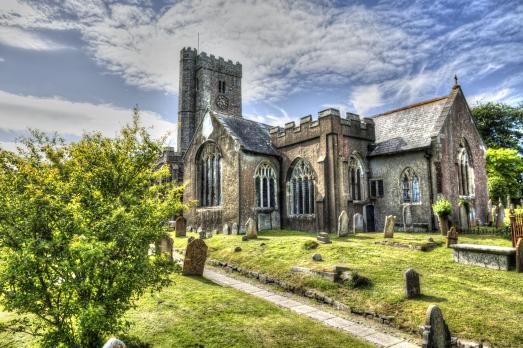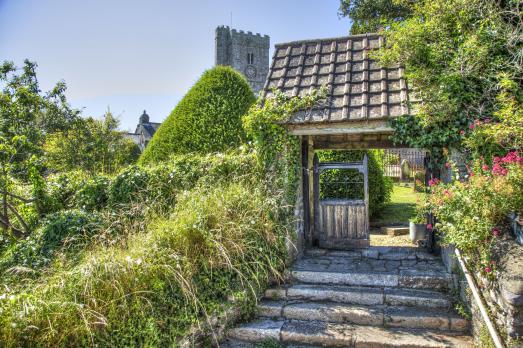Ilsington village grew up around the original Saxon manor and St Michael’s. It is not known when the church was originally consecrated. The earliest mention is found in a document of 1187 but there is no remaining trace of the first church.
By the end of the 13th century the growing development of the parish, as more waste land was cleared and settled, had demanded the erection of a new building. Parts of this building exist today in the chancel and south transept and survive from the end of the 13th century. The prosperity at the end of the 15th century, largely due to the wool trade and tin mining, accounted for the rebuilding of the church. The church was essentially as we see it today, a mainly late 15th century structure.
On entering the church three niches can be seen above the porch that are believed to be unique. The nave and chancel have a wonderful wagon roof. The church interior is regarded as being among the most interesting of those on Dartmoor. One of its remarkable features is the oak Rood Screen. It dates from the 16th century.
St Michael’s has the finest collection of floor ledger stones of any Dartmoor church. The font is ancient and typical of Dartmoor. An enlargement of the churchyard to the northeast took place at the end of the 19th century to include part of the original site of the Ford’s old manor house, remains of which can still be visited.
There are a number of listed tombstones, including one in the memory of Thomas Ford which has the only chronogrammatic inscription found in a Dartmoor churchyard. Another massive granite stone, dated 1667, has the following inscription 'It was desired of her who lyeth here interred that her bones should not be moved until the Resurrection'. There are two official war graves within the churchyard.
The lychgate and its room above are 20th century replacements for those which had become dilapidated and had been dismantled in 1871. It is now used regularly for children’s church.





